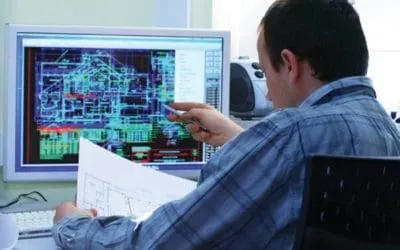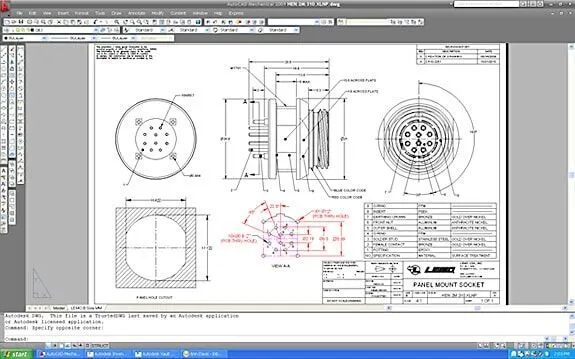From Old Design to New via Reverse Engineering

Reverse engineering makes use of an existing object to generate a new one. Often the new object is an improvement over the design of the old one, or, it may be an identical part needed to replace a malfunctioning part in a machine.
Some businesses use reverse engineering to move into 3D digital records of their own products or to assess competitor’s products. Another use is to analyze how a product works, what it does, and identify potential patent infringement.

Whatever the rationale for using reverse engineering, 3D scanning technology, and 3D CAD make the process much easier than it used to be. Before these technologies became readily available and relatively simple to use, the common way to reverse engineer a product was to take it all apart and see how it worked – time-consuming, full of guesswork, and not always beneficial. But, as computer-aided design (CAD) has become more popular, reverse engineering has become a viable method to create a 3D virtual model of an existing physical part for use in 3D CAD, CAM, CAE or other software. The reverse-engineering process involves measuring an object and then reconstructing it as a 3D model. The physical object can be measured using 3D scanning technologies like CMMs, laser scanners, structured light digitizers, or Industrial CT Scanning (computed tomography). The measured data alone, usually represented as a point cloud, lacks topological information and is therefore often processed and modeled into a more usable format such as a triangular-faced mesh, a set of NURBS surfaces, or a CAD model.
Benefits of Reverse Engineering Using 3D Scanning
- A high degree of precision for a wide range of surfaces as compared
to manual measurements - Faster turnaround time as compared to conventional methods
- Cost-effective reproduction of existing machine parts
- Faster time-to-market for your products
Reverse Engineering is a Boon for Small Companies
It’s the faster time-to-market that makes reverse engineering such a boon for small design and engineering firms. Starting with an existing product and using reverse engineering speeds up development and cuts production costs.
A lot of small businesses outsource the process so that they can benefit from up-to-date hardware and software that work together for the reverse engineering process, without the capital expense of purchase. For instance, 3D Scanners are used to create a virtual digital representation of the object, which specialized software then reconstructs it as a 3-D model.
Additionally, while reverse engineering and CAD are integrated, they are two different processes, using different systems and skills. Keeping your in-house CAD team focused on your core business, eliminates the need for additional training and loss of focus from their main design responsibilities.
Reverse Engineering Makes Sense
Reverse engineering is a practical way to create a three-dimensional virtual model of an existing physical part. Once you have the 3D model, the use of 3-D CAD, computer- manufacturing, or other computer-aided engineering applications becomes much easier. The way we do it
Outsourcing Makes It Easy
You provide the part you want reverse engineered to the 3D scanning service. They will scan and create the point cloud file, with all the part measurements and shapes into the software. From there, it’s into CAD software, like SolidWorks, CATIA, or AutoCAD where the 3D model is finalized. The reverse-engineered part will appear much like the originally scanned piece. You can also request appropriate improvements, and test how they will work, all in the virtual model.
Recent Posts


CAD Outsourcing Doesn’t Have to Be Done In India
CAD Outsourcing Doesn’t Have to Be Done in India Do a Google search for “CAD Outsourcing” and what you’ll find is lots of firms located in India, which is fine if you’re prepared to go off-shore for CAD services. But what if your U.S. based company prefers to stay a...

AutoCAD Fiber Optic Designs & Drawings
Before proceeding forward in explaining the affinity between AutoCAD and Fiber Optic, it would be prudent to rationalize the utility of optical cables. When communicating between systems, either via the internet or via an internal network system, a medium needs to be...

CAD Outsourcing: How to Get the Most Out of Engineering
In today’s competitive market, companies need as much help as possible. If you want to take a larger market share, you can start by outsourcing some of your work. This is a quick way to expand your engineering power without onboarding and training a new staff. This...
